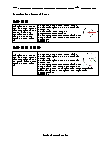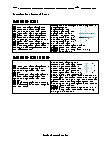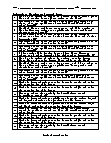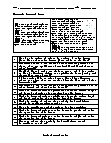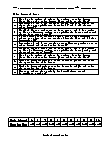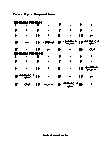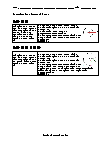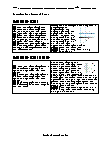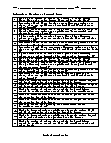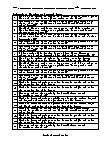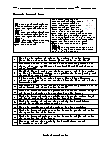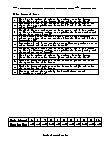Compound Locus Worksheets
What is a Compound Locus? A compound locus problem involves two, or occasionally more, locus conditions occurring at the same time. The different conditions in a compound locus problem are usually separated by the word "AND" or the words "AND ALSO". When two locus conditions appear in a problem, you need to prepare each condition separately on the same diagram. After drawing the two separate conditions, the solution will be the locations where the two loci intersect. Let's review the strategies for solving locus problems, with an emphasis on compound locus. 1. Draw a diagram using the given information. 2. Read carefully to determine what conditions need to be satisfied. Look for the words "AND" or "AND ALSO" separating the conditions and choose the first locus condition. 3. Plot the first locus condition only. If you do not immediately see the first condition as an application of an existing locus theorem, start by finding ONE point that satisfies the needed conditions and plot it on your diagram. Then find several additional points that satisfy the conditions and plot them as well. Continue plotting points until you can see the pattern, or path, that is developing, and you see which locus theorem is needed. 4. Draw a dashed line, or circle, through the plotted points to show the first locus. 5. Now, plot the second locus condition on the same diagram. Temporarily ignore the first condition. Follow steps 3 and 4 again to prepare this second condition. 6. The location where the dashed lines (or circles) intersect will be the points which satisfy both conditions. These points of intersection will be your answer to the compound locus problem.
-
Basic Lesson
Guides students through the application of compound loci. Two points L and M are 10 units apart. How many points are there, that are equidistant from both L and M and also 7 units from L?
View worksheet -
Intermediate Lesson
Demonstrates how to use coordinates to assist. (i)Find the locus of points equidistant from the points (-3,1) and (-3,-4) and write the equation for this locus. (ii)Find the locus of points equidistant from the points (2,2) and (4,2) and write the equation for this locus. (iii)Find the number of points that satisfy both conditions stated in above problem. Give the coordinates.
View worksheet -
Independent Practice 1
A really great activity for allowing students to understand the concepts of the Compound Locus. What is the number of points in a plane, 3 units from a given line and 4 units from a given point on the line?
View worksheet -
Independent Practice 2
Students use Compound Locus in 20 assorted problems. The answers can be found below. Two points L and M are 8 units apart. How many points are there, that are equidistant from both P and Q and also 3 units from P?
View worksheet -
Homework Worksheet
Students are provided with 12 problems to achieve the concepts of Compound Locus. A given point R is 14 units from a given line. How many points are there that are 6 units from the line and 4 units from point R?
View worksheet -
Skill Quiz
This tests the students ability to understand Compound Locus. Two points A and C are 6 units apart. How many points are 20 units from A and also 3 units from C?
View worksheet -
Intermediate Lesson
Demonstrates how to use advanced skills to tackle Compound Locus problems.
View worksheet -
Independent Practice 1
A really great activity for allowing students to understand the concepts of the Compound Locus.
View worksheet -
Independent Practice 2
Students use Compound Locus in 20 assorted problems. The answers can be found below.
View worksheet -
Homework Worksheet
Students are provided with 12 problems to achieve the concepts of Compound Locus.
View worksheet
Fun Fact:
Most people would say that a circle has no corners, but consider this: it may be more accurate to say that it has an infinite number of corners instead.
